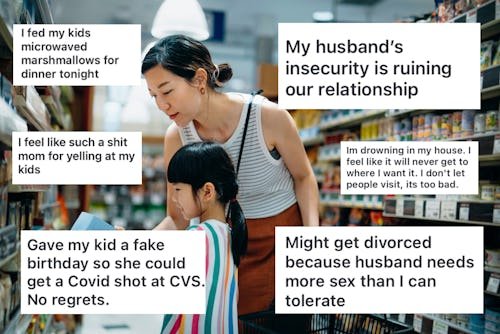
Nothing is certain, least of all employment. It might be more traditional and financially responsible (initially) to be hired on as a full-time employee. But don’t be fooled into believing that it’s more secure. Most U.S. employment is “at-will,” and given the waves of return-to-office mandates and layoffs over the last year-and-a-half, the longstanding perception that employees are safer if they’re directly employed isn’t really justified. It may be easier, but it certainly isn’t more stable.
And so it’s no secret that there are talented individuals seeking to break away from that merry-go-round. (I was one of them, a decade-plus ago.) That’s why we’ve seen a huge uptick in the last five years of employees opting for freelance or flexible work. Yes, it started because of shifting pandemic realities and constraints, but it’s continued through the Great Resignation as employees stood up and demanded more from their employers.
In 2016, a Freelancing in America study found that 55 million Americans, or 35% of the U.S. workforce, was independently employed. Since the pandemic, the freelance economy grew to include an estimated 64 million Americans. Today, it’s not just the workers benefiting from the flexibility of independent work. A 2024 poll found a 260% jump in freelance overseas contracting from North American companies, signaling that independents are no longer a staffing backup plan for savvy corporations. Smart leaders are leveraging independents to make their workforces more agile as part of their core business strategy.
WHAT IT TAKES TO BECOME SUCCESSFULLY INDEPENDENT
That’s a lot of opportunity to secure diverse, flexible work as an independent. However, to be truly effective—and stand out from an increasing pool of freelancers—pursuing independent work must be an active, consistent choice that regularly puts your creativity and flexibility on display. Here’s how to stand out from the pack.
Diverse opportunities: No one asks a musician why they don’t only play in one club. No savvy investor would intentionally invest all their money into one stock and it’s not smart for an established artist to exclusively show in one gallery. Independents should take the same approach by exploring diverse opportunities for gainful client work.
Pipeline: A successful independent is proactive by always pursuing a series of contracts, projects, and connections. Landing one contract and sticking with it is not enough. An effective independent knows it takes time to build a pipeline and that work may come in waves, so set up a few retainers, but never stop pitching or networking. The most important KPI in a client relationship is—and always will be—trust. And that takes time to build.
Organization: The ability to keep multiple plates spinning also applies when doing the actual work. With more than one gig comes more than one stakeholder and more than one schedule. You must be organized, remain attentive, and never stop the hustle.
Creativity: Expert project management means nothing without a healthy penchant for creativity. The strongest independents are creative problem solvers. They respond to a problem by pausing, asking only necessary questions, and then brainstorming solutions and mirroring those back to their stakeholders.
Flexibility: Flexibility is a core expectation of freelance life, but it means more than varied schedules. A truly flexible independent is used to working across diverse teams to complete projects. If scope and specs shift, they flex in tandem, used to the variables which bring change. Because those plates? They can spin at different speeds and different directions, all at once.
Self-awareness: Independents are also self-aware. They know what they’re good at, and they know how to sell their skillset, their credentials and their experience—because ideally, they never stop doing it. Successful indies don’t undersell themselves because they understand that their reputation is not something they should bargain away. Whether a monthly retainer or a one-off project, they know their rates, and they stick to them. They also know that you reap what you sow. There’s a direct correlation between what you get out of something, and what you put into it. Indies know where their value lies.
Resilient: Most of all, successful independents are resilient. Freelance work comes with its fair share of rejection. By staying savvy and thick-skinned, independents can not only survive but thrive through job market instability because they accept work when they’re able and hustle the rest of the time. I like to think of things in terms of baseball odds—if you are successful at one-third of your at-bats, you’re doing a hell of a job.
A TWO-WAY STREET
Life as a successful freelancer is a two-way street. Independents understand that the way their work benefits not only them, but the companies that contract with them. Freelance talent enables companies to pull in higher level talent across various degree fields for less than the total cost of full-time employees. Plus, they’re able to invest in and tap talent when they need it, skipping the whole hire/layoff cycle which typically accompanies a challenging economic climate.
In the end, everyone—including large companies—benefits from the flexibility of an independent mindset.
Justin Tobin is founder and president of Gather.




